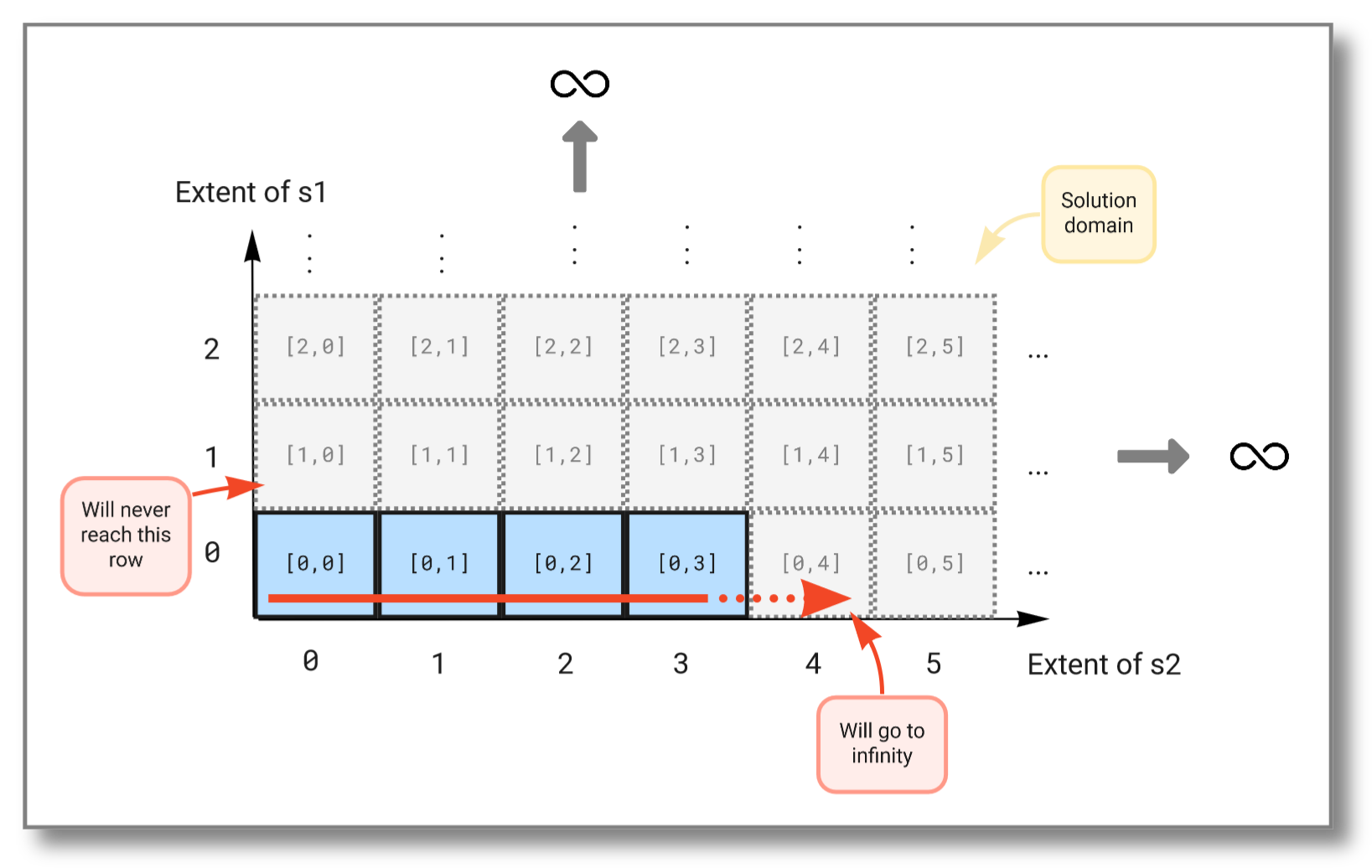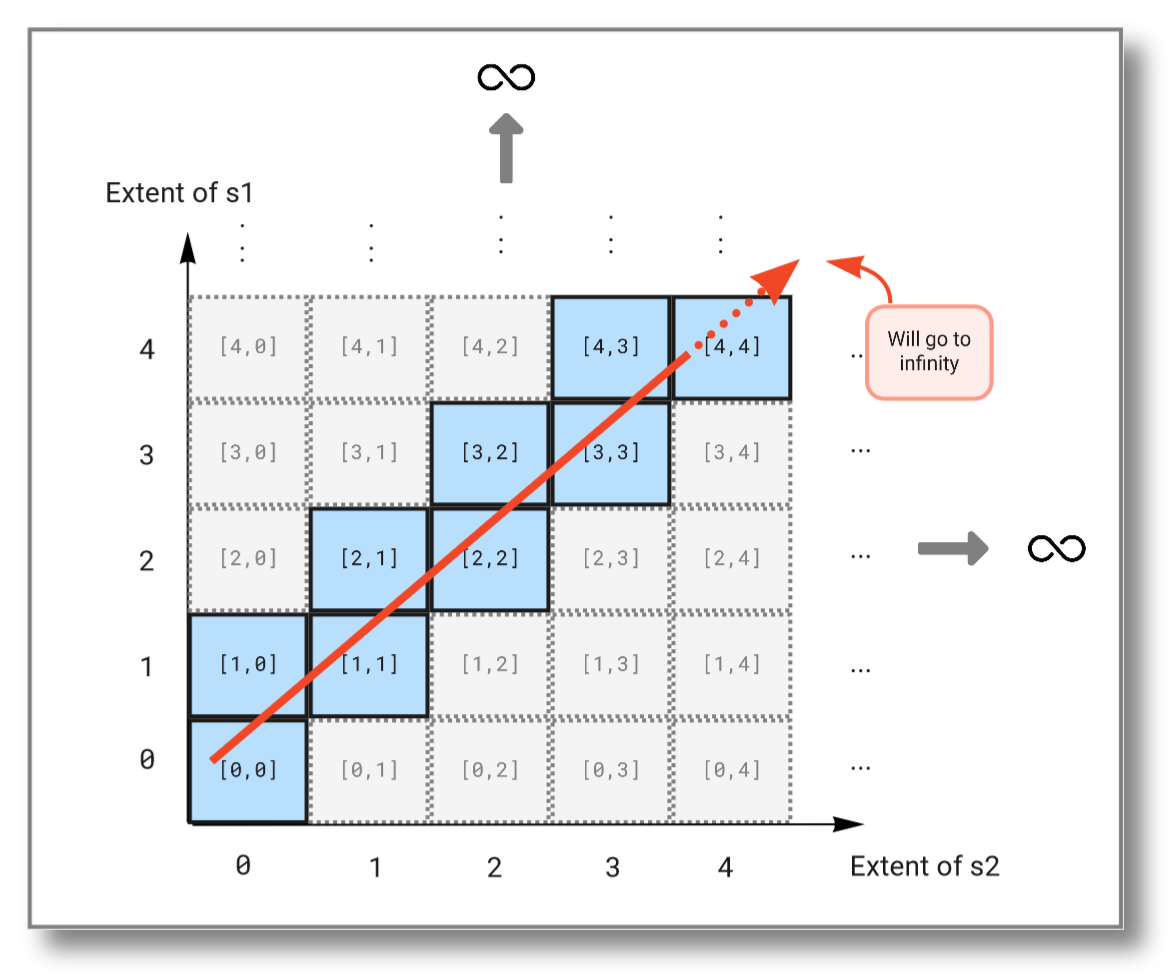Combining streams
In this section we will go through how to combine several streams in a query. This tutorial might help you if you are working with streams of several signals and would like to combine and compare them.
Merging streams
The function merge(Vector of Stream vs)->Stream creates a new stream
from the streams in vs. The elements of the merged stream are
taken from each of the incomong streams in vs as the arrive.
Example:
timeout(merge([heartbeat(0.25), heartbeat(0.5)*2]),3.1)
The elements of the first stream are
0,0.25,0.5,0.75,1,1.25,1.5,1.75,2,2.25,2.5,2.75,3 produced with pace
0.25 seconds, while the elements of the second stream are
0,1,2,3,4,5,6 produced with pace 0.5 second.
The merge() function is used when the same elements are retrieved
from different sources and there is no need to identify the origin of
each element.
Pivot streams
The function pivot(Vector of Stream vs)->Stream of Vector merges a
vector of streams into a pivoted stream of vectors where
each element is the most recently received value from some
stream in .
Example: The following query merges two different heartbeat streams:
select pivot([heartbeat(0.5), heartbeat(1)])
limit 10
Notice that the first vector contains a null value. This is
because the pivoted stream had not received any value from the second stream
when it received the first value from stream 1. This can be avoided
by using a pivot streams variant that takes an extra argument being
the initial vector in the result stream:
pivot([heartbeat(0.5), heartbeat(1)], [0,0])
The following query returns a stream of the currently largest elements in the incoming streams:
select max(pivot([sin(heartbeat(0.25)), sin(heartbeat(0.5))]))
limit 15
Unlike merge(), pivot() makes it possible to identify the origin
of each element of the result stream by accessing elements of each
pivoted result stream element.
Example: The following query returns a stream where each element contains both the index of the incoming stream producing the maximum value and the value itself:
select argmax(m), max(m)
from Vector of Real m
where m in pivot([sin(heartbeat(0.25)), sin(heartbeat(0.5))])
limit 15
Let's time stamp the elements:
select ts([argmax(m), max(m)])
from Vector of Real m
where m in pivot([sin(heartbeat(0.25)), sin(heartbeat(0.5))])
When time stamping query result tuples that have several values they must be placed in vectors.
Now let's pivot two simulated streams:
select v
from Stream of Vector pivot, Vector of Stream vs, Vector v
where vs = [1+simstream(0.02), 2+simstream(.2)]
and pivot = pivot(vs)
and v in pivot
limit 14
select v
from Stream of Vector pivot, Vector of Stream vs, Vector v
where vs = [1+simstream(0.02), 2+simstream(.2)]
and pivot = pivot(vs, zeros(dim(vs)))
and v in pivot
limit 14
The following is an example of a more advanced stream pivot:
select pivot
from Stream of Vector pivot,
Vector of Stream vs,
Stream heartbeat_mod,
Stream fast_heartbeat_mod
where vs = [
simstream(0.02),
3+simstream(.2),
heartbeat_mod,
fast_heartbeat_mod
]
and heartbeat_mod = 1 - 2*mod(heartbeat(1), 2)
and fast_heartbeat_mod = mod(round(10*heartbeat(.1)), 2)
and pivot = pivot(vs, zeros(dim(vs)))
limit 14
Arithmetics on combined streams
If you want to run arithmetics on pivoted streams you first need
to extract the vectors from the pivoted stream. This is done with the
line v in sv in the query below.
//plot: Line plot
select v[1]*v[4] + v[3]*10, v[4], v[2]
from Stream of Vector sv,
Vector of Stream vs,
Stream hbmod,
Stream hbmodfast,
Vector of Real v
where hbmod = 1 - 2*mod(heartbeat(1), 2)
and hbmodfast = mod(round(10*heartbeat(.1)), 2)
and vs = [simstream(0.02), 3+3*simstream(.2), hbmod, hbmodfast]
and sv = pivot(vs, zeros(dim(vs)))
and v in sv
limit 100
Let's smooth that v[2]
//plot: Line plot
select v[1]*v[4] + v[3]*10, v[4], avg(win)
from Stream of Vector sv,
Vector of Stream vs,
Stream hbmod,
Stream hbmodfast,
Vector of Real v,
Vector of Real win
where hbmod = 1 - 2*mod(heartbeat(1), 2)
and hbmodfast = mod(round(10*heartbeat(.1)), 2)
and vs = [simstream(0.02), winagg(3+3*simstream(.2),10,1),
hbmod, hbmodfast]
and sv = pivot(vs, zeros(dim(vs)))
and v in sv
and win = v[2]
limit 100
The following two queries seem to be defined in the same way, but they do give rise to different behavior:
//plot: Multi plot
{'sa_plot': 'Scatter plot', 'labels':['x','y'], 'memory': 1000};
select pivot([sin(10*heartbeat(.01)),
cos(10*heartbeat(.01))])
limit 150
//plot: Multi plot
{'sa_plot': 'Scatter plot', 'labels':['x','y'], 'memory': 1000};
select sin(x), cos(x)
from Real x
where x in 10*heartbeat(.02)
limit 50
The first query differs slightly since it uses two independent
streams together with pivot streams, This means that
we essentially have two streams where sin and cos are applied to
their own stream over time (heartbeat) before they are merged.
In the second example we apply sin and cos to the x from the
same heartbeat stream.
More examples of how we can specify multiple streams in a query:
//plot: Multi plot
{'sa_plot': 'Line plot', 'memory': 200};
select pivot([sin(hb), sin(hb+pi())])
from Stream of Real hb
where hb = 10*heartbeat(.02)
limit 100
//plot: Multi plot
{'sa_plot': 'Bar plot', 'memory': 200};
select pivot(select Vector of sin(i/3 + 3*heartbeat(.03))
from Integer i
where i in range(0,29)
order by i)
limit 100
Hopefully these short examples have made you understand how you can combine streams.
Type extents and the solution domain
We explain the theory behind how select stream queries combine infinite sets of objects and show how this is used for combining infinite streams.
Every type t has an extent(t) being the set of all objects of type
t. For example, the extent of the type Integer is "all integers
from negative infinity to positive infinity", or .
A select statement first forms the Cartesian
product of the
extents of all variables in the from clause, called the solution
domain. The where clause then specifies conditions limiting the
emitted result to a subset of the solution domain.
For example, consider the select statement below. It forms a Cartesian
product of the extent of i, which is the set of all possible
integers, with the extent of s, which is the set of all possible
strings. The where clause has two conditions. One that limits i to
the set , and one that limits s to the set
. This restricts the result to the Cartesian product
of and .
select i, s
from Integer i, Charstring s
where i in bag(1,2,3)
and s in bag("a","b","c");
Running the above query gives the following result:
[1,"a"]
[1,"b"]
[1,"c"]
[2,"a"]
[2,"b"]
[2,"c"]
[3,"a"]
[3,"b"]
[3,"c"]
The figure below illustrates how the extents span the solution domain,
and how the result is produced as the Cartesian product of the two
extents limited by the conditions in the where clause:

We can limit the solution further by imposing additional conditions in the where clause, like this:
select i, s
from Integer i, Charstring s
where i in bag(1,2,3)
and s in bag("a","b","c")
and i > 2;
Running the above query gives the following result:
[3,"a"]
[3,"b"]
[3,"c"]
This time the subset of the solution space is further limited due to
the extra condition on i and now looks like this:

For a stream query, let's consider binding variables to infinite
subsets in the solution domain. We can do this by using streams that
never end. For example, heartbeat() generates a stream of seconds
emitted at a given pace. This stream is infinite since time has no
end. The select statement below tries to combine two such streams, but
as we will see, taking the Cartesian product between two infinite sets
will not work. Try running the query:
select s1, s2
from Real s1, Real s2
where s1 in heartbeat(1)
and s2 in heartbeat(1);
The result should be:
[0,0]
[0,1]
[0,2]
[0,3]
.
.
.
We see that the first stream never increases because the second stream (which is evaluated first) never finishes. The figure below illustrates how the Cartesian product "travels" through the solution domain:

To combine infinite streams you must instead use the pivot()
function. It combines the outputs of multiple streams into one vector
and outputs a new vector each time one of the streams emits a
result. The query below combines the streams from the previous example
into a single stream:
select v
from Stream of Real s1, Stream of Real s2, Vector v
where s1 = heartbeat(1)
and s2 = heartbeat(1)
and v in pivot([s1,s2]);
The result should be:
[0,null]
[0,0]
[1,0]
[1,1]
[2,1]
[2,2]
[3,2]
[3,3]
[4,3]
[4,4]
.
.
.
As you see, this query will continue to infinity but include the values from both streams. If we look at the subset emitted from the solution domain, we see that the query "travels" diagonally through the solution domain:

select i
from Integer i, Vector v
where v = [4,3,9,1,9,5]
and v[i] = max(v);
